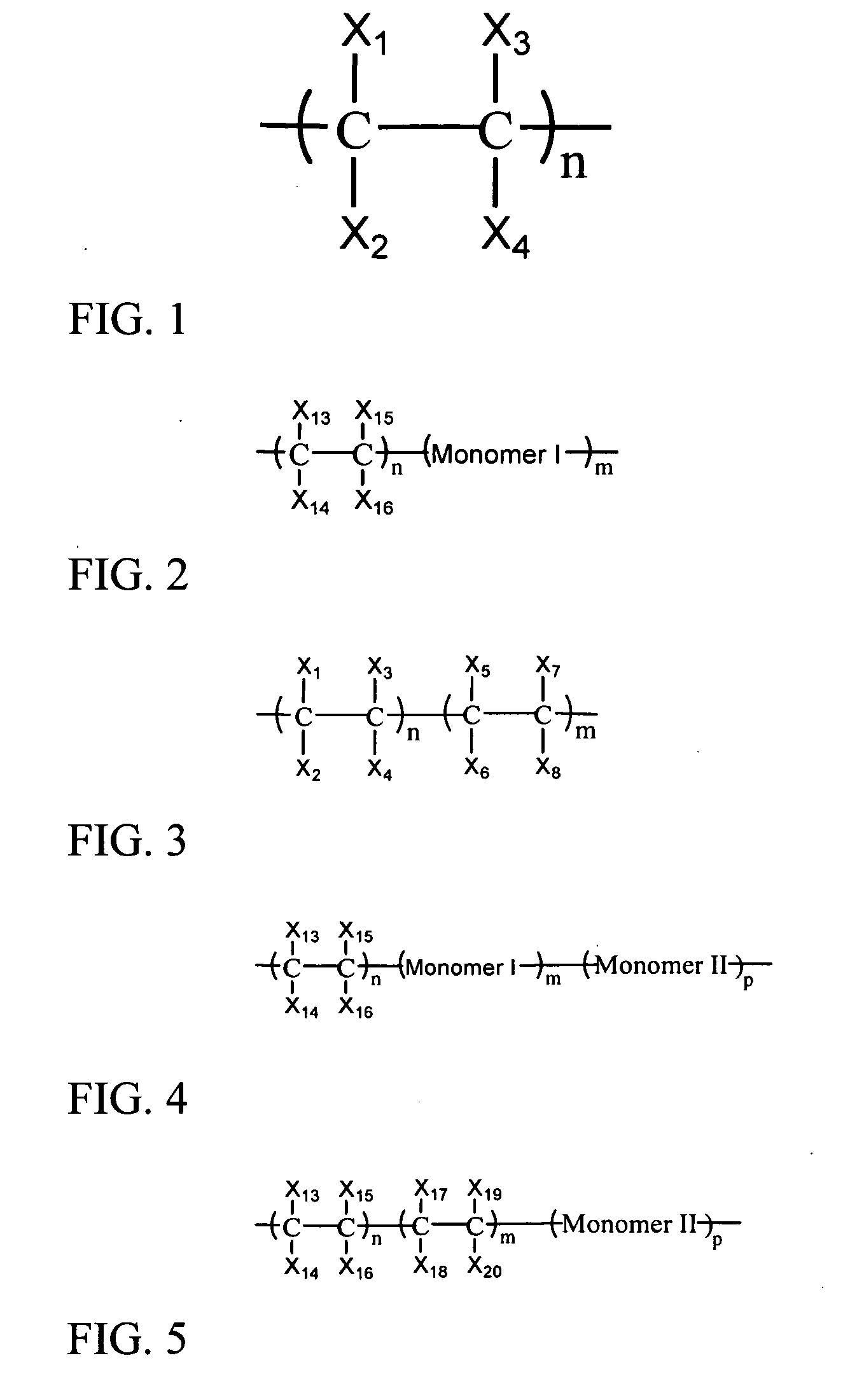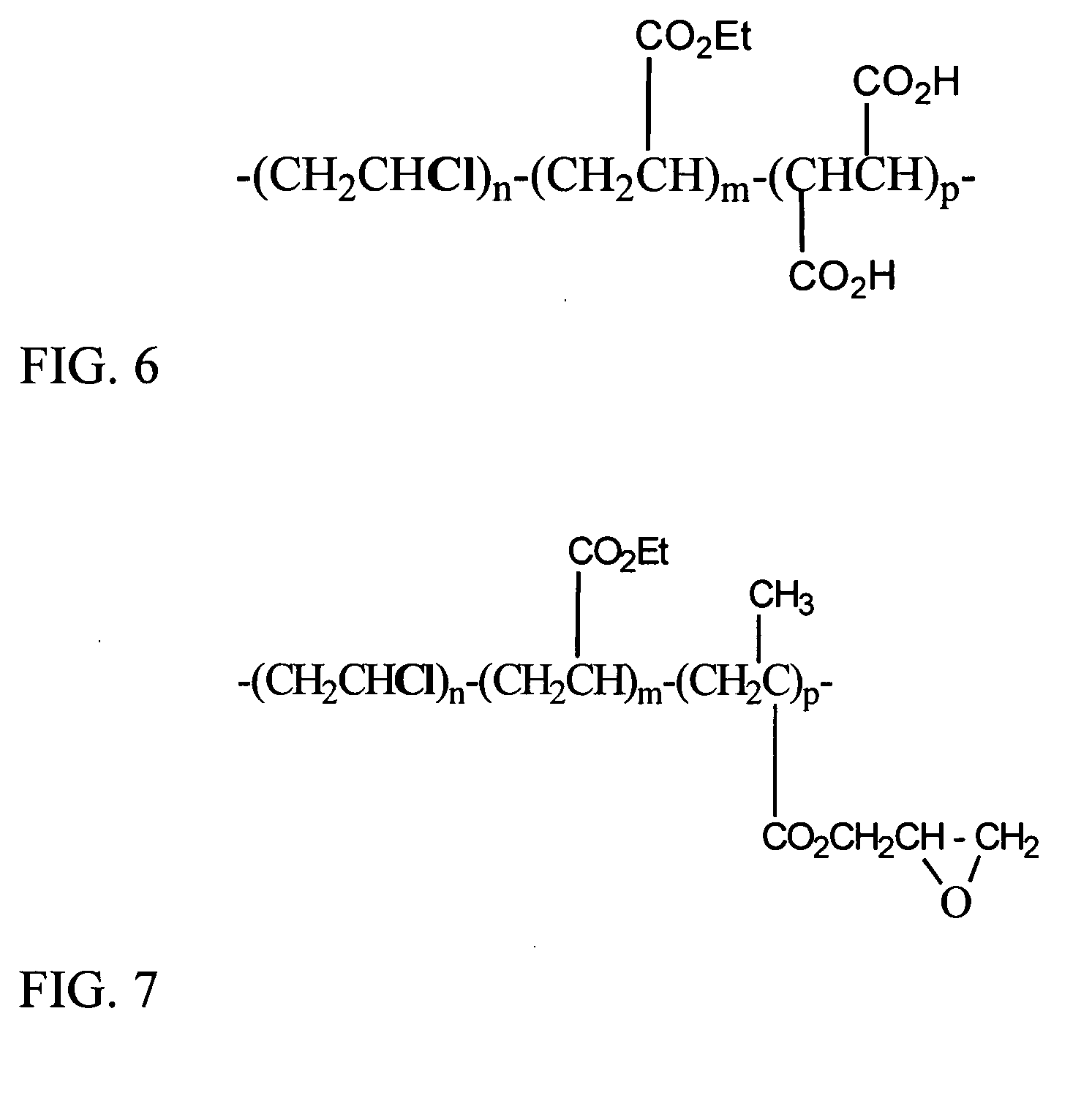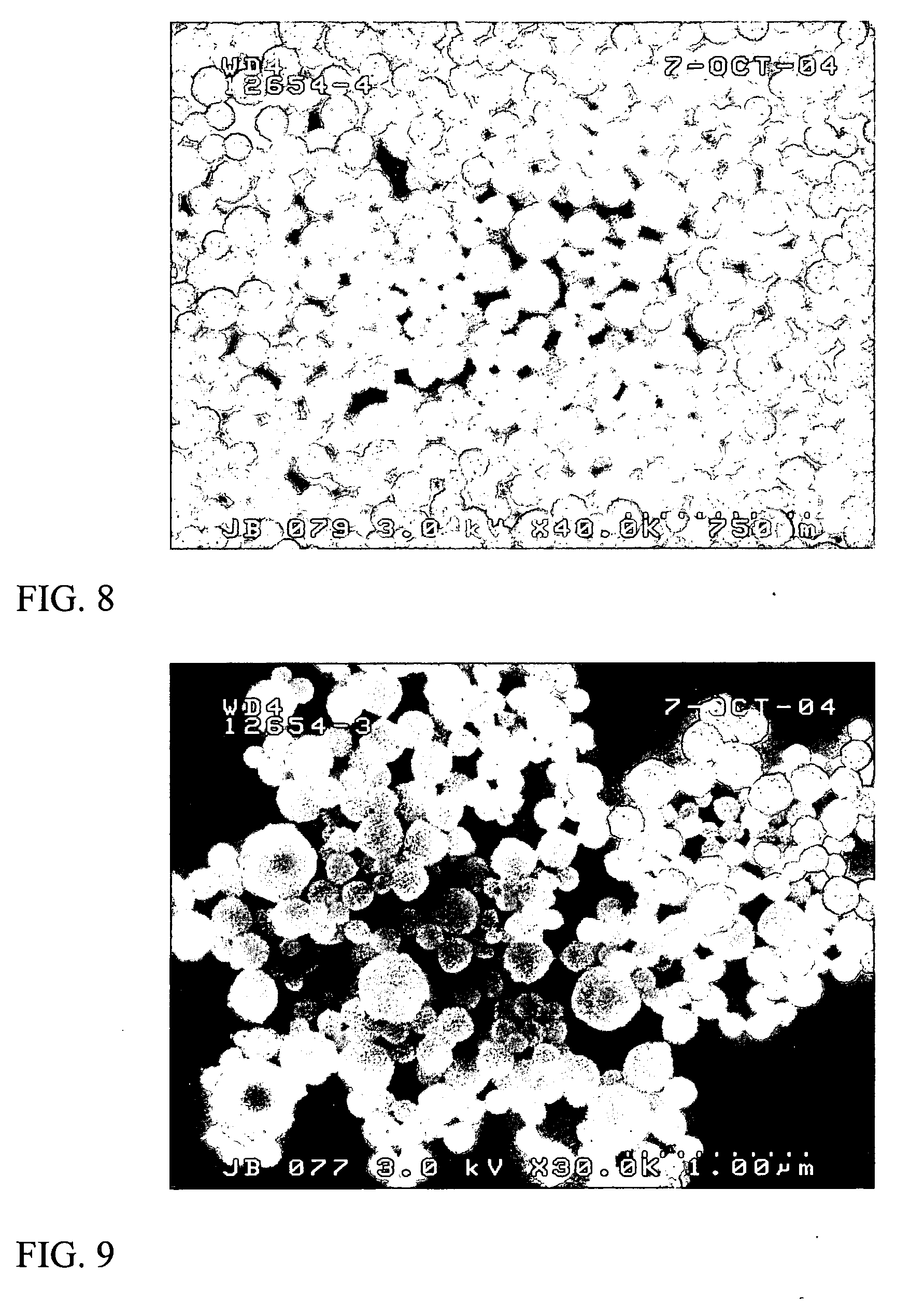Photo-stable and surface-functionalizable colorant particles
- Summary
- Abstract
- Description
- Claims
- Application Information
AI Technical Summary
Benefits of technology
Problems solved by technology
Method used
Image
Examples
example 1
Halogen-Containing Copolymers for Dispense Orange 3
[0113] Halogen-containing copolymers were considered for dye encapsulation because they normally have low oxygen permeability and may be compatible with nonionic aromatic disperse dyes. The example structure of the halogen-containing copolymer (PVCMA) is shown in FIG. 6a.
[0114]FIG. 6a. Poly(vinyl chloride-co-vinyl acetate-co-maleic acid) (81:17:2)
[0115] Disperse Orange 3 is an example of an azo dye. It is mainly used to dye acetate, polyamide polyester, and polyacrylonitrile. Its structure is shown in FIG. 11. About 4 mg / ml of stock disperse Orange 3 solution is prepared by dissolving 20 mg dye powder in 5 ml DMF and filtered through 0.2 μm filter. 5 mg / ml of copolymer of PVCMA is prepared by dissolving 125 mg polymer into 25 ml of THF. The vials were stirred and heated briefly to ensure completely dissolution of the polymers. PVCMA of 600 μl THF with 10% disperse Orange 3 mix solution is stirred vigorously, while 3 ml of filter...
example 2
Cross-Linkable Halogen-Containing Copolymers for Disperse Blue 3
[0117] Cross-linkable halogen-containing copolymers may have an epoxy-functional group for cross-linking. The structure of a cross-linkable polymer (PVCEM) is shown in FIG. 7a.
[0118]FIG. 7a. Poly(vinyl chloride-co-vinyl acetate-co-epoxy monomer) (82:9:9)
[0119] Disperse Blue 3 dye is anthraquinone, which has a chemical structure illustrated in FIG. 12. About 4 mg / ml of stock disperse Blue 3 solution is prepared by dissolving 20 mg dye powder in 5 ml DMF and filtered through 0.2 μm filter. 5 mg / ml of copolymer of PVCMA and PVCEM is prepared by dissolving 125 mg polymer into 25 ml of THF respectively. The vials are stirred and heated briefly to ensure complete dissolution of the polymers. PVCMA / PVCEM mix (4:1) of 600 μl THF with 10% disperse Blue 3 mix solution is stirred vigorously, while 3 ml of filtered distilled water is added drop-wise into the vial.
[0120] Particles are formed and the particle size is measured us...
example 3
Washing and Crosslinking the Dye Particles
[0121] Dye particles made in experiment 1 & 2 were washed by dialyzing against 4 liters of deionized water. Fresh deionized water is changed at about 2 hr, 6 hr and 24 hr time points. Cross-linked Disperse Blue dye particles were prepared by keeping washed dye particles in a drying oven at about 80° C. for 4 hours. Particle size and poly-dispersion results for those washed and cross-linked Disperse dye particles were listed in the following Table 3.
TABLE 3Particle Size and Polydispersion (nm / PD) for Dye ParticlesDisperseWashed &DyeOrange 3WashedDisperse Blue 3Cross-linkednm / PD135 / 0.005141 / 0.021176 / 0.005180 / 0.045
PUM
| Property | Measurement | Unit |
|---|---|---|
| Temperature | aaaaa | aaaaa |
| Temperature | aaaaa | aaaaa |
| Particle size | aaaaa | aaaaa |
Abstract
Description
Claims
Application Information
 Login to View More
Login to View More - R&D
- Intellectual Property
- Life Sciences
- Materials
- Tech Scout
- Unparalleled Data Quality
- Higher Quality Content
- 60% Fewer Hallucinations
Browse by: Latest US Patents, China's latest patents, Technical Efficacy Thesaurus, Application Domain, Technology Topic, Popular Technical Reports.
© 2025 PatSnap. All rights reserved.Legal|Privacy policy|Modern Slavery Act Transparency Statement|Sitemap|About US| Contact US: help@patsnap.com



